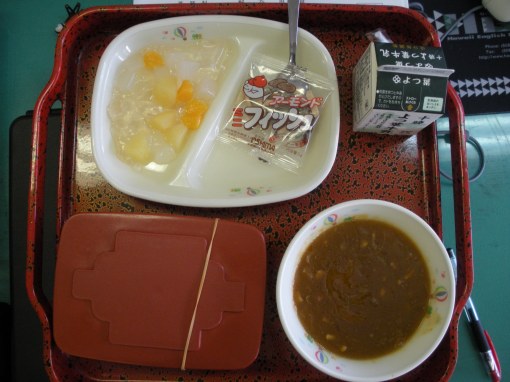December 30th, Wednesday:
- Furano Omucurry (Pork, Potato, Carrot, Onion)
- Milk
- Omelet
- Furano Milk Julee(Acerola Julee, Pineapple, Tangerine, Peach, Nata de Coco)
- Kcal: 941
In Hokkaido for School Lunch Week, we are having “Let’s eat local curry!” So this year we’ve had Furano Omucurry twice! For dessert, we have a jelly made of Furano milk, an original dish from Furano School Lunch Centre.
Today was an all day ski class, so I didn’t eat school lunch. But I just found out occasionally they can order school lunch even at the Board of Education! So I couldn’t eat school lunch, but at least I could take a lovely picture of it for you!
富良野オムカレーライス
牛乳
オムレツ
ふらの牛乳ジュレ

